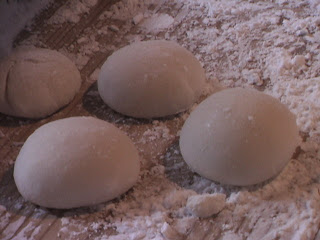
When meeting someone for the first time there is a certain question I expect: Why did you come to Japan? For me, the answer isn’t difficult but rather complex. I mean, why does one like a painting or a symphony movement? There are many variables people take in all at once and, through careful consideration, come to a well thought out explanation as to why they like something – they just do.
That’s exactly how I feel about Japan. When I decided to apply for the JET program there were many things for me to take into consideration. I would be moving half way around the world to a country that I’ve only seen in pictures to live in a culture I’ve only read about.
To me, the Land of the Rising Sun was always a country of mystery. As a child I was introduced to Japan through anime. My brother liked the art style and soon I wondered why their art was so much more exciting than America’s. Later I learned about Japan’s history in high school and became interested in the technology. In college I had no reason to research anything but after listening to current Japanese music I started once again to learn what I could.
I began to study interesting Japanese art. It wasn’t the paintings or sculptures that caught my eye but film and literature. As a fan of horror stories and folk tales I found Japanese literature to be quite captivating, full of nuance and subtly. As for the films, well, let’s just say there are times I still shiver at shadows.
This of course led me to other artists. People like Keiji Nakazawa, Haruki Murakami and Keiishi Tanaami whose art and interpretation of life can be so full of wonder and color it makes you feel like a kid again. It can also give you an insight into the darkest parts of the human mind. While still interested in the Japanese art world I branched out into other areas as well. Soon I was reading about the language, the economy, the landscapes and so many other things I can’t remember it all.
I remember being very excited receiving my acceptance into the JET program; everything started falling into place. Of course, nothing in real life is greater than the picture painted in our imagination. I started wondering if I had made the right choice, if going to Japan would be something I would enjoy. I also wondered if I had what it took to be a teacher.
The weeks leading up to my departure were long and sometimes sad but I kept thinking of all the wonderful things that awaited me. After spending 14 hours on a plane I got my first look at Japan – the airport terminal. Not exactly what one would call a breathtaking view but just seeing signs in Japanese gave me the feeling that it was really happening and I was in a country half way around the world.
All of us poor, lost, wide-eyed teachers shuffled our way down a maze of corridors and managed to make our way outside. To this day I will never forget my real first experience in Japan – the humidity. Laugh now, but when you walk out of a nice air-conditioned building into a literal wall of wet heat, well, you remember how much you laughed.
Despite the shock of such weather I enjoyed my first summer in Japan. I was brought to my town, called Taiza, located in Kyoto Prefecture. I was shown around to many schools and had to give many introductions. I must admit I have no formal training in speaking Japanese so I leaned heavy on my translator. Even though I just smiled and nodded a lot everyone was very kind to me.
You must be thinking: “If you don’t speak the language why did you go there, are you crazy?” and the answer is yes, but that’s not the point. Japan seemed like such an amazing adventure to me and it is. This place has managed to live up to my imagination and then some. I’ve also gotten to know quite a number of people even though we don’t speak the same language. I’ve learned that just trying can go a long way. Also, children really like it when you make funny faces.
Today I still live in Taiza. I signed on for another year of teaching because I found everything to be so wonderful. Of course there are times when things are tough, when you want to communicate and can’t, when you think you’re biting into a cherry pie only to have it foam white cream back at you or when you realize that you’ve just filled your car with diesel and still can’t speak the language.
These are all experiences I went though and now laugh about though it has taught me to be more cautious (beware of green colored gas pumps!). In the end Japan is what you make of it. If you come here expecting new experiences and maintain an open mind then you will have an extraordinary time. If you arrive miserable and feel the place would be better if everyone spoke English then I have to ask you: Why did you come to Japan?
-Rob R.









































